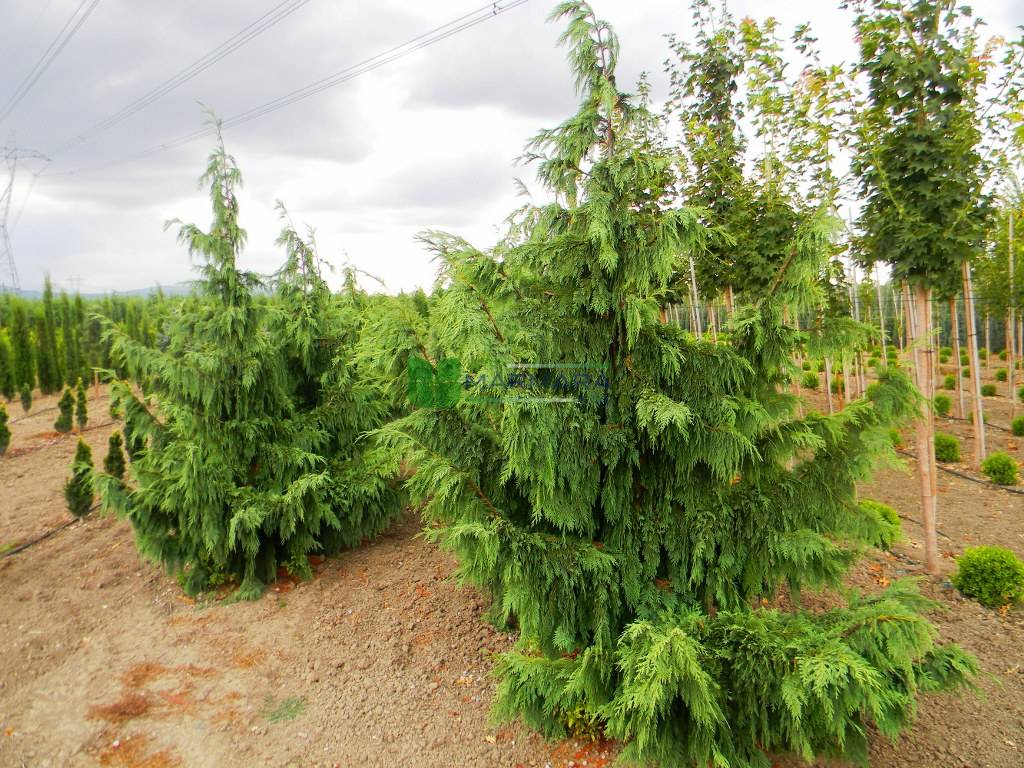

Alaskan Yellow Cedar was initially placed in the Cupressus genus, and later in the Chamaecyparis genus (where it had remained for roughly 160 years). But the genus of the tree has been less clearly defined-it’s perhaps one of the woods with the most often-changed and reclassified botanical name. Sustainability: This wood species is not listed in the CITES Appendices, and is reported by the IUCN as being a species of least concern.Ĭommon Uses: Carving, boatbuilding, siding, flooring, decking, outdoor furniture, musical instruments (flutes, soundboards on guitars), boxes and chests, and various utility/construction applications.Ĭomments: Alaskan Yellow Cedar has more or less always had the species label nootkatensis (so named for the Nuu-chah-nulth people of Canada).
#NOOTKA CYPRESS LUMBER FREE#
Expect prices to be high for a domestic species, particularly for clear pieces free of knots. Pricing/Availability: Supply of this wood is limited. See the articles Wood Allergies and Toxicity and Wood Dust Safety for more information. Odor: Alaskan Yellow Cedar has a distinct scent that is similar to raw potatoes.Īllergies/Toxicity: Although severe reactions are quite uncommon, Alaskan Yellow Cedar has been reported to cause skin irritation. Workability: Easy to work with both hand and machine tools, though pieces with wavy grain may produce tearout during planing.

Rot Resistance: Reported to be durable to very durable regarding decay resistance, and also resistant to most insect attacks. Grain/Texture: Grain is usually straight, though sometimes wavy, with a uniform medium to fine texture.Įndgrain: Resin canals absent earlywood to latewood transition gradual, color contrast medium tracheid diameter small to medium.

Chamaecyparis nootkatensis (Nootka Cypress).

Four girl mountain in autumn Stock Photo. Color tends to darken with age upon exposure to light, (though when left exposed outdoors it weathers to a uniform gray). background and texture of cedar wood on furniture surface Stock Photo. Sapwood is a similar whitish/pale yellow and isn’t distinct from the heartwood. Shrinkage: Radial: 2.8%, Tangential: 6.0%, Volumetric: 9.2%, T/R Ratio: 2.1Ĭolor/Appearance: Heartwood is a light yellow. *This species has undergone many reclassifications, see note in commentsĭistribution: Northwest coast of North America Yes, Alaskan Yellow Cedar can be stained (often recommended) and provides a beautiful finish when stained.Alaskan Yellow Cedar (Cupressus nootkatensis)Ĭommon Name(s): Alaskan Yellow Cedar, Nootka Cypress As it is quite a valuable softwood option though, not all suppliers will regularly have stock of yellow cedar. Naturally, Alaskan Yellow Cedar grows in the northern pacific coast of North America, however, is widely used by timber manufactures in Australia due to is excellent qualities. Regularly used for decking and external cladding, Alaskan Yellow Cedar is a great option for external applications as it is very resistant to weather. Is Alaskan Yellow Cedar Weather Resistant? The Alaskan Yellow Cedar species is less expensive when compared to other softwood species such as Western Red Cedar. Despite commonly thought of as weaker, many softwoods are in fact as strong as, if not stronger than, some hardwoods. This is often a desired feature by builders and architects. Does Alaskan Yellow Cedar Fade?Īlaskan Yellow Cedar does not fade but silvers over time with exposure to rain and sun. These external applications often include flooring, decking, weatherboards, external cladding, roofing and even boat manufacturing. What Is Alaskan Yellow Cedar Used For?Ĭlassified as a highly durable softwood, yellow cedar is regularly used for external applications that require a resistant timber. Alaskan Yellow cedar is a North American softwood timber renowned for its attractiveness, durability and ease of tooling.


 0 kommentar(er)
0 kommentar(er)
